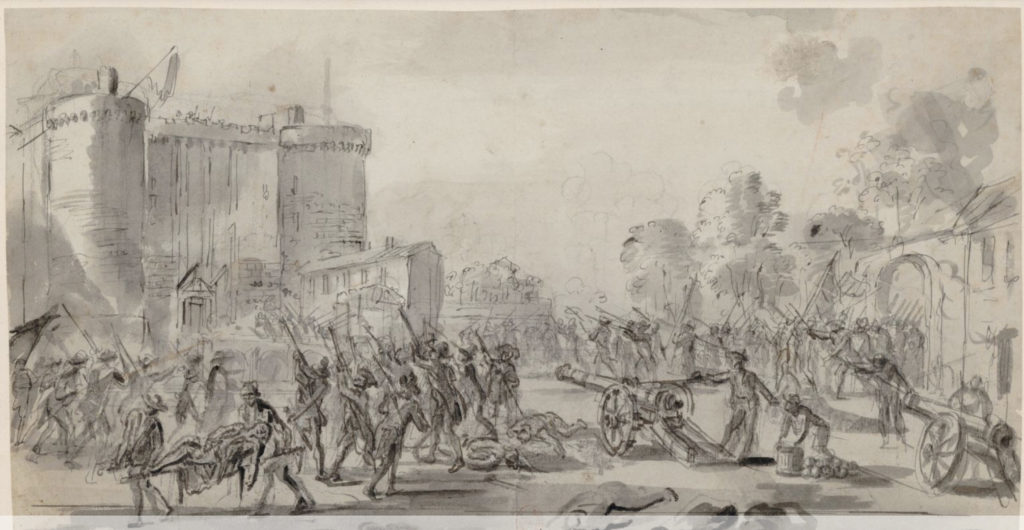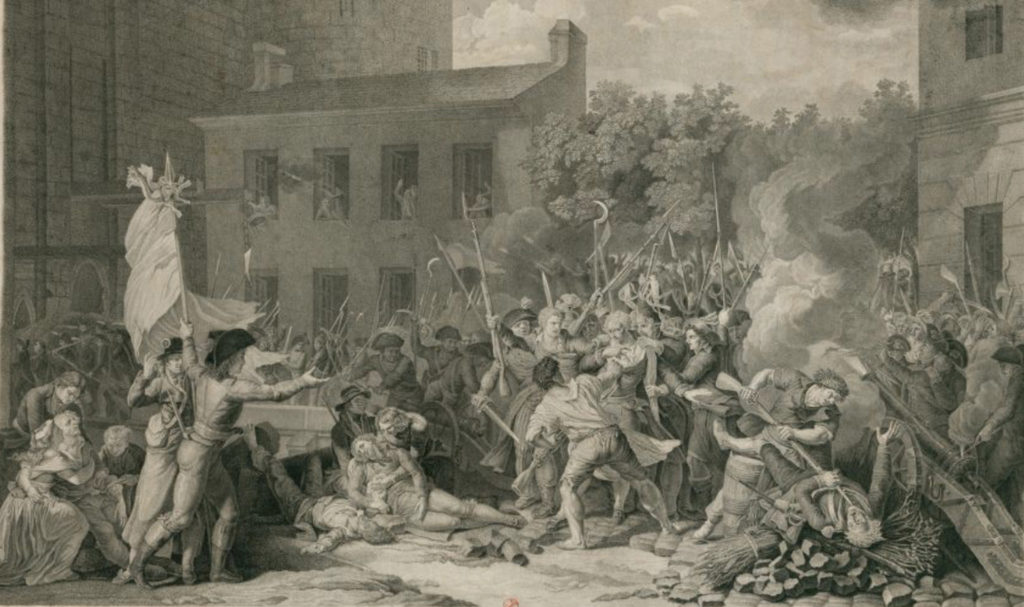Americans think of July 14 as Bastille Day, but French people don’t call it that. Instead, they refer to July 14 as “la Fête Nationale Française” or “Fete Nat” or even as “la Fête du 14 Juliet.” That roughly translates as the French National Holiday—or the 14 July holiday.
Regardless of what it is called, however, July 14 remains the anniversary of a singular and momentous event in French history.
In the 1780s people in France were suffering from economic crisis, regressive taxation, poor harvests, and royal corruption. But King Louis XVI and Queen Marie Antoinette paid no attention to their concerns. Instead, like their predecessors on the throne, they threw people they perceived as enemies into the medieval prison known as the Bastille. At the time, that hulking structure was the symbol of royal authority in Paris—and as hatred of the monarchy spread, it came to symbolize royal corruption and tyranny as well.
In 1789 French people rose up in against tyranny in the Great French Revolution. They created a National Assembly, which asserted the inalienable rights of people against tyranny and issued the groundbreaking “Declaration of the Rights of Man and of the Citizen.” On July 14 revolutionaries stormed, or broke into, the Bastille to free the prisoners and seize munitions stored there. They found only a handful of inmates, but the Storming (prise) of the Bastille proved to be epochal, as it set in motion a chain of events that led to the execution of the king and queen in 1793 and the series of revolutionary governments, restorations, and republics that followed for the next 200 years. During those centuries the promise of human rights articulated in the Declaration of Rights was ever more deeply fulfilled in the rule of law.
No cameras were present to document the events of the French Revolution, but many artists and writers captured the storming of the Bastille in their imaginations. Archivists began compiling these works in 1862, and by 1914 the collection had grown to 82 volumes. More recently archivists have digitized thousands of images and historical documents, including prints, pamphlets, and even musical scores, dating from the years just before the outbreak of the Revolution through the emergence of Napoleon. To house this extraordinary collection, the Bibliothèque Nationale de France and Stanford University partnered to create the French Revolution Digital Archive, where the images are available for everyone to see. Try typing “Bastille” where it says “browse” and see what comes up!

